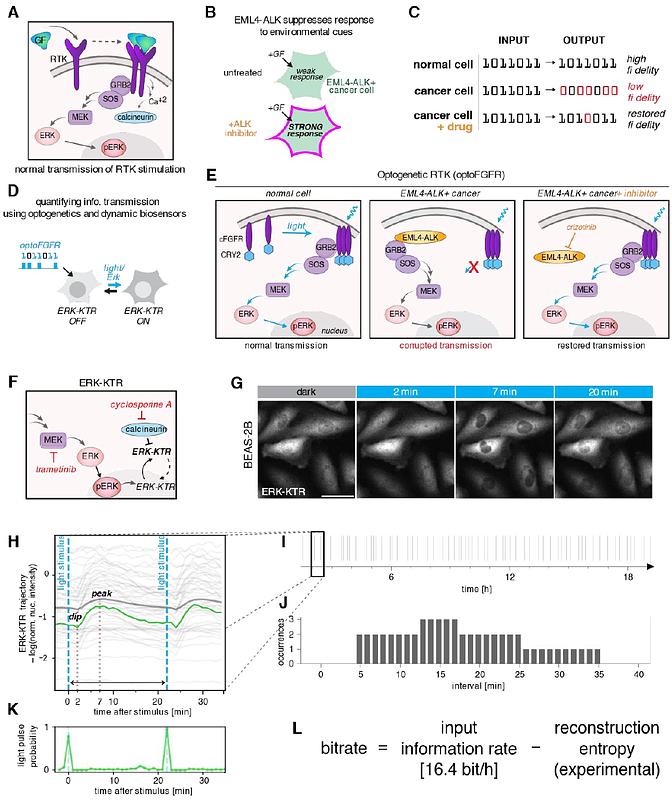Quantifying cancer- and drug-induced changes in Shannon information capacity of RTK signaling

Quantifying cancer- and drug-induced changes in Shannon information capacity of RTK signaling
Nałecz-Jawecki, P.; Roth, L.; Grabowski, F.; Li, S.; Kochanczyk, M.; Bugaj, L. J.; Lipniacki, T.
AbstractSignaling pathways transmit and process information, enabling cells to respond accurately to external cues. Disease states like cancer can corrupt signal transmission, though the magnitude to which they reduce information capacity has not been quantified. Here we apply pseudo-random pulsatile optogenetic stimulation, live-cell imaging, and information theory to compare the information capacity of receptor tyrosine kinase (RTK) signaling pathways in EML4-ALK-driven lung cancer cells (STE-1) and non-transformed lung epithelial cells (BEAS-2B). The information rate through the RTK/ERK pathway in STE-1 cells was below 0.5 bit/hour but increased to 3 bit/hour after oncogene inhibition. Information was transmitted by only 50-70% of cells, whose channel capacity (maximum information rate) was estimated through in silico protocol optimization. Although oncogene inhibition increased the capacity of the RTK/ERK pathway in STE-1 cells (6 bit/hour), capacity remained lower than in BEAS-2B (11 bit/hour). The capacity of the parallel RTK/calcineurin pathway in BEAS-2B exceeded 15 bit/hour. This study highlights information capacity as a sensitive metric for identifying disease-associated dysfunction and evaluating effects of targeted interventions.